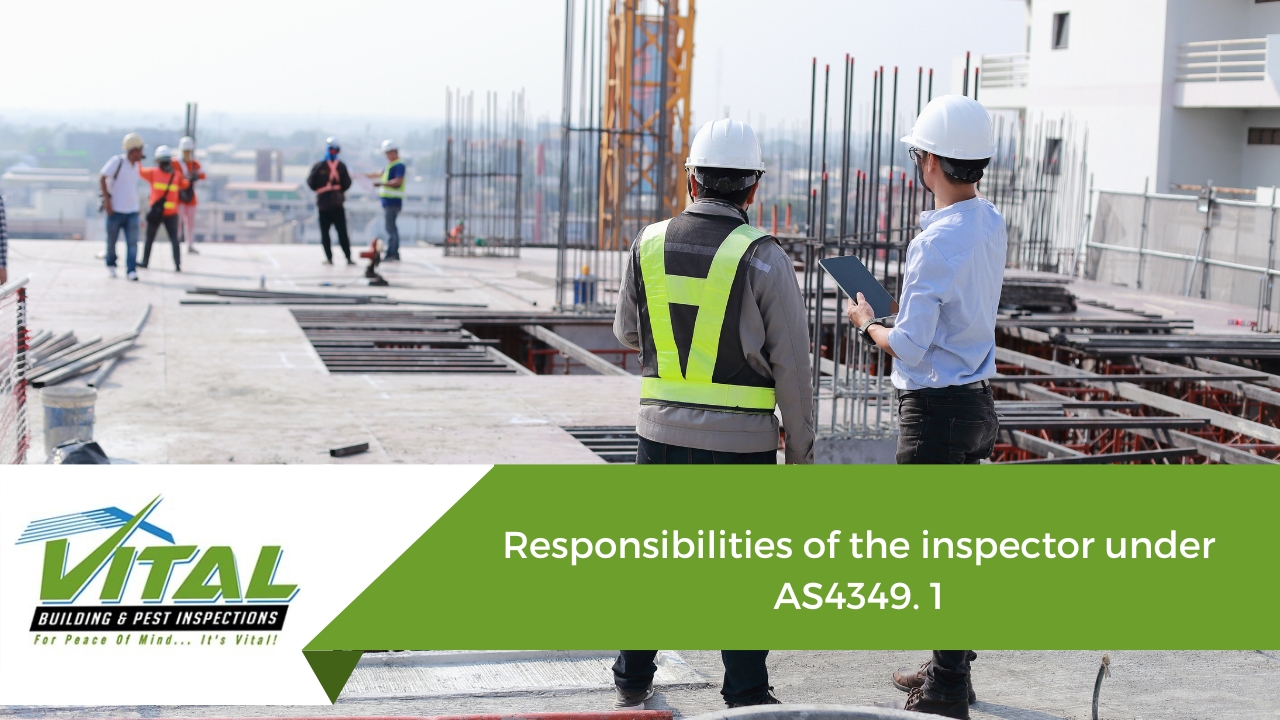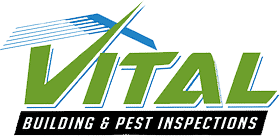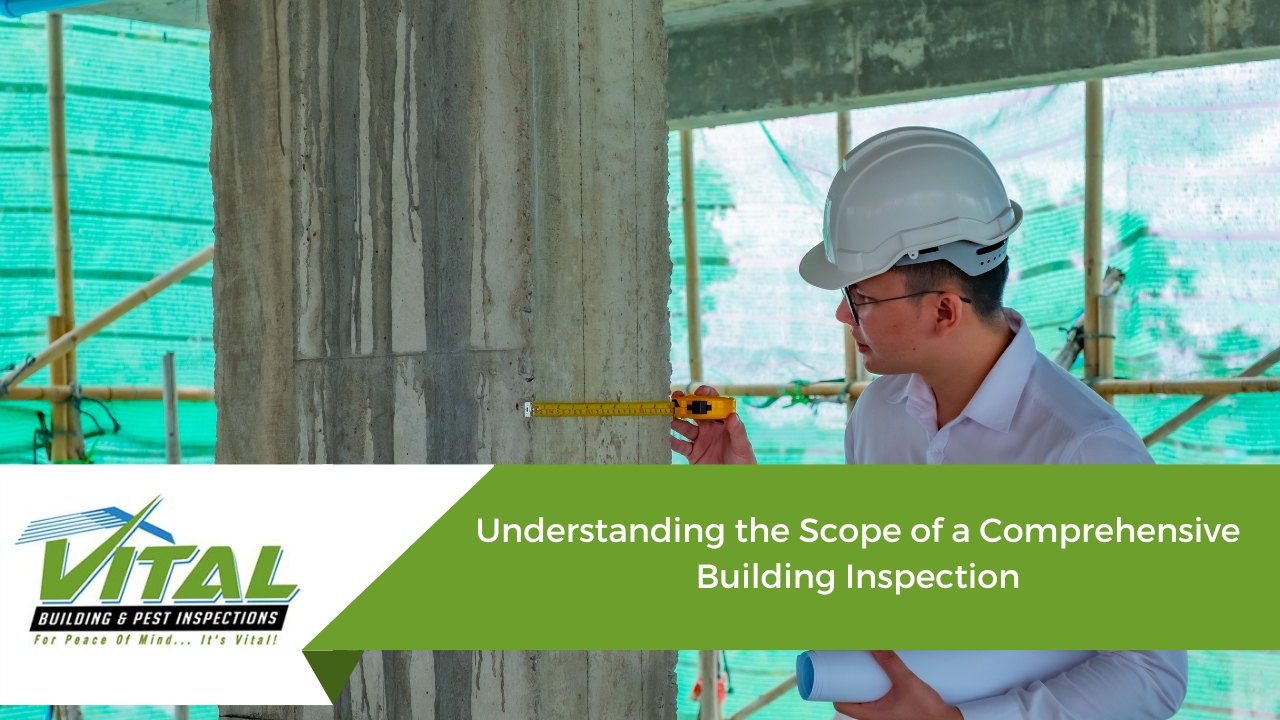Buying your first home can be both thrilling and a bit terrifying, especially when it comes to understanding the exact condition of your potential new property. Did you know that a comprehensive building inspection report is an essential tool for prospective homeowners, providing detailed information on everything from minor fixes to major structural issues? This article will guide you through the scope of such inspections, helping you grasp why they are vital before sealing the deal on any real estate purchase. Ready for clarity? Let’s dive in!
Key Takeaways
- A comprehensive building inspection is essential for prospective homeowners as it provides detailed information on the condition of a property, from minor repairs to major structural issues.
- AS4349.1 is a crucial standard in building inspections, setting guidelines for inspectors to thoroughly assess both the interior and exterior parts of a building, and identifying potential defects and maintenance issues.
- The scope of AS4349.1 covers general principles, different types of inspections (structural assessment, interior examination, exterior examination), and limitations that may exist during the inspection process.
- An inspector’s responsibilities under AS4349.1 include conducting a thorough examination of the property, evaluating compliance with building codes and regulations, and effectively communicating findings in an AS4349.1-compliant report.

The importance of AS4349. 1 in building inspections
Delving into the world of property, the significance of AS4349.1 in building inspections cannot be overstated. This comprehensive standard is a golden thread ensuring professionalism and quality within inspection procedures.
As critical to homeowners as a foundation stone, it sets stringent guidelines for inspecting both the interior and exterior parts of a building.
Acting as your eyes and ears, an inspector guided by this standard will delve deeper than surface appearances – their detailed examination covers everything from roof space to under-floor areas.
Building defect identification forms an integral part of any professional AS4349.1 inspection process; it helps unearth minor repairs or maintenance issues that could escalate into major structural problems if left unattended.
The value-add here is twofold: not only does it reveal potential building code compliance pitfalls but also offers you a clearer picture of pre-purchase considerations or property maintenance requirements moving forward with possession changeover decisions.
So next time you approach prepurchase inspections, remember that AS4349.1 isn’t just a guideline—it’s your essential guidepost for sound investment choices in real estate landscape.

The scope of AS4349. 1
The scope of AS4349.1 includes general principles, various types of inspections, and limitations to ensure a comprehensive assessment of the property’s condition.
General Principles
The general principles of a comprehensive building inspection provide the foundation for a thorough assessment of your property. These principles ensure that every aspect of the building is carefully examined to identify any potential issues or defects.
One key principle is compliance with Australian building standards, which ensures that your property meets the required safety and quality guidelines. Another principle involves conducting a detailed examination of both the interior and exterior areas of the property, leaving no stone unturned in assessing its condition.
It’s important to note that a comprehensive inspection aims to go beyond just identifying major defects – it also includes minor repairs and maintenance issues that could affect your property in the long run.
Types of inspections
There are different types of inspections involved in a comprehensive building inspection process. These inspections cover various aspects to ensure a thorough assessment of the property. One type is the structural assessment, which focuses on identifying any significant defects or issues with the building’s structure.
Another type is the interior examination, where the inspector assesses elements such as plumbing, electrical systems, and fixtures. The exterior examination includes checking for any damage to the roof, walls, windows, and other external features of the property.
There are inspections that evaluate compliance with building codes and regulations to ensure safety standards are met. Understanding these different types of inspections helps home owners gain a complete picture of their property’s condition and potential maintenance requirements before making important decisions about buying or selling.
Limitations
It’s important to be aware that building inspections do have certain limitations. While a comprehensive inspection aims to cover as much as possible, there are some areas that may not be accessible or fully examined.
For example, hidden defects behind walls or under floors may not be visible during the inspection process. Additionally, issues related to electrical systems and plumbing that are concealed within the structure might also go unnoticed.
Another limitation is that inspectors are unable to provide estimates for repairs or renovations based on their findings. Despite these limitations, it’s crucial to remember that a thorough building inspection can still uncover significant issues and help you make an informed decision about the property you’re considering purchasing.

Responsibilities of the inspector under AS4349. 1
Under AS4349.1, the building inspector has several important responsibilities when conducting a comprehensive inspection. Firstly, they are tasked with performing a thorough examination of both the interior and exterior of the property to identify any potential defects or issues.
This includes assessing key areas such as the foundation, walls, roof, plumbing systems, electrical systems, and more. The inspector is responsible for ensuring that their assessment adheres to Australian building standards and codes. They must evaluate whether the property meets these regulations in terms of safety and structural integrity.
Any significant structural defects or non-compliance with building codes should be clearly identified in their report.
It is crucial for inspectors to communicate their findings accurately and effectively in an AS4349.1-compliant report. This means providing detailed information about any identified issues or concerns regarding the property’s condition.
By fulfilling these responsibilities diligently, inspectors play a vital role in helping home owners make informed decisions about potential purchases and ensuring their safety and peace of mind.
Under AS4349.1 guidelines, the responsibility lies on the inspector to conduct a comprehensive inspection covering all aspects of the property’s structure while also evaluating its compliance with relevant building codes.
Reporting requirements under AS4349. 1
AS4349.1 sets out the key elements of an AS4349.1-compliant report, ensuring a comprehensive evaluation of the property’s condition and highlighting any areas that do not meet building code regulations or have significant structural defects.
Key elements of an AS4349.1-compliant report
An AS4349.1-compliant report includes several key elements that are essential for a comprehensive building inspection. First, it provides detailed information about the structural integrity of the building, which is crucial for home buyers to make informed decisions.
The report also covers both the interior and exterior examination of the property, providing a thorough assessment of its condition. In addition, it identifies any issues that do not meet the building code or significant structural defects, ensuring compliance with Australian standards.
AS4349.1-compliant report serves as a valuable resource for home owners by providing them with important information about their property’s condition before they make any purchasing decisions.

Benefits of AS4349. 1-compliant reports
AS4349.1-compliant reports provide peace of mind for property buyers and sellers, ensure thorough inspections by professional inspectors, and minimize risk in building inspections. Want to learn more about the benefits? Keep reading!
For property buyers and sellers
Whether you’re a property buyer or seller, understanding the scope of a comprehensive building inspection is crucial. By obtaining an AS4349.1-compliant inspection report, you can have peace of mind knowing that every aspect of the property has been thoroughly assessed.
The report will provide detailed information about any defects, maintenance issues, or non-compliance with building codes that could affect the property’s value or structural integrity. With this valuable knowledge in hand, buyers can negotiate repairs or adjust their offer accordingly, while sellers can address any issues upfront to ensure a smoother transaction process.
Investing in a comprehensive building inspection benefits both parties by providing transparency and confidence in the condition of the property being bought or sold.
For property inspectors
Property inspectors play a crucial role in the building inspection process. They are trained professionals who meticulously examine every aspect of a property to ensure that it meets all safety and quality standards.
One key benefit for property inspectors is the opportunity to contribute to risk management in building inspections. Their expertise allows them to identify any structural defects or code violations that could pose a risk in the future. This ensures that buyers are aware of any potential issues before making their purchase, reducing the likelihood of costly repairs down the line.
Another advantage for property inspectors is the ability to provide detailed reports that comply with Australian building standards. These comprehensive reports offer valuable insights into the condition of a property, including any maintenance requirements or construction flaws.
For risk management in building inspections
Building inspections play a crucial role in risk management when it comes to properties. By conducting a comprehensive inspection, potential risks and hazards can be identified early on, allowing homeowners to take appropriate measures to mitigate these risks.
The detailed assessment provided in an inspection report helps homeowners understand the condition of their property, including any structural defects or maintenance requirements that may pose a risk in the long term.
This knowledge empowers homeowners to make informed decisions about necessary repairs or renovations, ensuring their property remains safe and structurally sound for years to come.

Conclusion
In conclusion, understanding the scope of a comprehensive building inspection is crucial for home buyers and sellers alike. AS4349.1 sets the guidelines for these inspections, ensuring that all aspects of the property are thoroughly assessed.
By engaging in this process, potential issues can be identified and addressed, providing peace of mind and helping to make informed decisions regarding property transactions.






